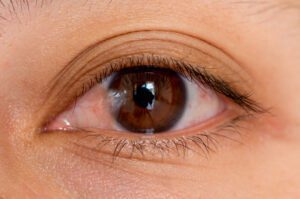
Dr Giula Barla, FEBO
Eye-Surgeon Ophthalmologist
Cataract surgery & Intraocular lenses for the treatment of refractive diseases & presbyopia
 Cataract is the blurring of the natural lens of the eye that causes a gradual decrease in vision.
Cataract is the blurring of the natural lens of the eye that causes a gradual decrease in vision.
The most common cause is age usually after 55-60 years, but it can also appear earlier than 50 years. 70% of people aged 70 and over have cataracts that need surgery. Other causes are inflammation of the eye (iridocyclitis), genetic & metabolic diseases (diabetes mellitus), glaucoma, high myopia, medication (eg cortisone), previous trauma or other eye surgery, smoking, hypnosis. a. It usually develops in both eyes, but not to the same degree.
During cataract microsurgery with phacoemulsification, the blurred lens is removed by ultrasound crushing and / or suction, and replaced with an artificial intraocular lens that remains permanently in the eye. It is possible to use Fempto-second Laser in some stages of the operation.
The experience of the surgeon and the fast time of phacoemulsification, make it the dominant fast, safe and very effective technique of cataract surgery.

The Symptoms of Cataracts
It is usually blurred, gradual reduction of vision -quantitative and qualitative- with reduced color perception. He may also have diplopia (monocular).
The waterfall has no pain.
Its treatment is only surgical.

It is the most common operation on the human body performed with great safety and local anesthesia. It is an extremely successful operation, with an average success rate of 99% (corneal incisions are less than 2.5mm, the operation is without sutures with a minimum chance of severe postoperative inflammation less than 1 / 1,000).
The time of the operation depends on the maximum visual acuity of the patient, his subjective disturbances in his daily life (driving, television, reading) and the accompanying diseases. We do not choose the waterfall to mature too much.
With the help of new technology, modern cataract surgery machines and special premium intraocular lenses, it is possible to simultaneously treat myopia (or hyperopia), presbyopia and astigmatism.
Before the operation, the ophthalmologist will examine the eye and will individually assess the appropriate choice of intraocular lens for each patient based on his needs and desires.
What are the types of intraocular lenses

Monofocal intraocular lenses treat the coexisting myopia or hyperopia so that the patient can see very well at a certain distance he desires, usually far away. If this type of intraocular lens is selected in the first eye and if the patient wants to correct the presbyopia, then the Monovision technique is selected, in which an intraocular lens is inserted in one eye for very good long-distance vision, while in the other eye an intraocular lens is inserted for good near vision.
Toric intraocular lenses correct not only myopia or hyperopia but also astigmatism. They have a clear indication for astigmatism greater than 1.5 degrees, while lower astigmatism can be corrected with appropriate keratotomies during cataract surgery. They are highly desirable, selectable intraocular lenses in the presence of significant astigmatism.
Intraocular lenses for Presbyopia can be divided into three broad categories:
1. Multifocal – Triple focus
2. Extensively focused multifocal (EDOF IOLS) and
3. Adaptive intraocular lenses (inside the periphery or in the sulcus)
Intraocular lenses EDOF (extended range of vision) is a new technology in the treatment of presbyopia. Increasing life expectancy and lifestyle changes have led to a large number of people asking independent vision near, in between and far.
The basic principle of these is to create an elongated focal point to enhance the focal depth, as opposed to unifocal intraocular lenses in which the lens focuses on one focal point or multifocal ones where the intraocular lens focuses on two or three distinct points.
Patient satisfaction is a function of the maximum visual acuity of the extended field of vision and the minimization of any dimness / discomfort.
The choice of intraocular lens will be made based on the daily needs of the individual, the size of the astigmatism, the need for night driving and the concomitant diseases of both eyes.
The Ophthalmologist will understand your real needs, helping to select the appropriate intraocular lens according to your individual needs.
Our eyes deserve the best!

Medical Center: 2 Thiseos Str., Maroussi
Τ: 210 8055260 K: 6945 904252
[email protected] www.barla.gr
“Υπαπαντή” Ophthalmology clinic 129 Solonos Str., Athens






